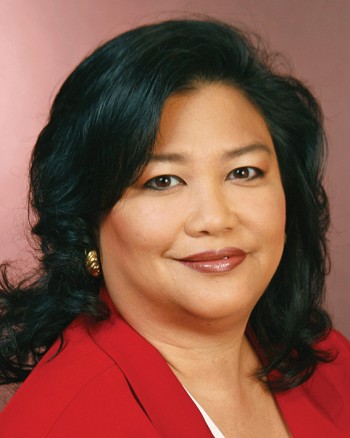
With the large annual PTC event fast approaching in January, Telecom Review recently visited with Sharon Nakama, the CEO of PTC, to give our readers an in-depth insight into PTC, and its ongoing operations throughout the year. The following are some of Sharon’s insights;
Sharon. Thank you for visiting with us. Can you please tell the Telecom Review readers about yourself and your career?
For me, personally, it’s been an astonishing, if somewhat accidental, journey!
After graduating from college, I very nearly became a programmer. I took a temporary job at PTC as a receptionist while waiting to take up a permanent position in computing. The temporary job just morphed into programming and then into conference organization and membership duties. I decided to stay at PTC and the rest is my history!
I had no prior background in telecommunications. PTC, as a small organization, offered wonderful variety. I’ve grown with the organization, just as the organization has grown with the Pacific community.
People in the PTC community helped me to understand this high-tech world, and how compelling and impressive it was. I’ve learned so much from this community. We continue to learn from each other and we at PTC want others to do the same.
What have been the big changes?
At PTC, we’ve have seen the huge impact of ICT across the entire Pacific region.
In the past two decades, tens of millions of people have gained access to ICT for the first time. It’s helped them connect, get employment and given them empowerment. Basically, it’s changed their lives demonstrably for the better.
This impacts at a national level. Countries see ICTs as vital to economic progress and are increasingly prioritising it. PTC presents great opportunities for everyone including policymakers to see ways to grow this impact of ICT.
For me, back at PTC, I’ve seen these changes through meeting thousands of people over the years from around the region. Some have been CEOs, some have been students, and every kind of professional in-between. We’ve seen people present ideas at each annual conference, and network together. A year later, we see joint projects agreed. Two years later, we see the projects launched and making lives better. Every time this happens, they lead the way for others to do the same.
What does PTC actually cover?
PTC is a broad umbrella for many sub-communities as diverse as subsea technology, satellite systems, data centers, carrier services and applications at every level. PTC is extremely open and inclusive in terms of new topics and new communities. Alongside technology interests, there are academic, developmental, regulatory and legal perspectives.
The mix of interests is extremely helpful. We are talking about very large and very diverse populations in the Pacific region with very different ICT needs. In fact, according to experts, the Asia-Pacific region is the most heterogeneous area in the telecom world.Some countries are really information societies, but others are the so-called least connected countries (LCCs). At PTC, we are very conscious of these continuing developmental needs. Our own vast community includes everyone from the most connected societies to the smallest island states in the Pacific Ocean.
Fixed and mobile ICTs are booming in this region. There are new applications everywhere. In turn, this is driving huge demand for other infrastructures such as subsea telecom cables, data centers, and satellite resources. In many cases, members of the PTC community are the very organizations and individuals that will be responsible for providing these new infrastructures and services.
What are the biggest challenges for PTC in continuing this process?
For me, our biggest challenge is to get the message out in terms of what PTC can do for professionals in this community. PTC provides conferences but many other forums and activities as well. But we need to explain that our value fundamentally is that we can connect people as well as educate them. Our annual conference is used as a major industry networking event in addition to the conference tracks by as many as 7,000 people in one capacity or another.
What have been your biggest challenges in being the CEO of PTC?
There are several significant external and internal challenges.
Externally, the biggest challenge for PTC is that the technology scene itself is very dynamic. Our new 3-year strategic plan will call for new ideas and activities. But in the last plan, there was no mention of data centers as a significant topic! This is now a very important area for us. I could say the same about subjects as diverse as connected cars, 8K HDTV and the Internet of Things. So, we must always stay relevant to the industry and all its sub sectors.
Internally, I have the challenges any manager has – how to recruit more good people to our existing excellent team. We have a magnificent team. The Secretariat are literally the best I could hope for in terms of their effort, attitude and competence. But we need to both meet our current challenges and look to expansion, so we need more good people. Here, Hawaii continues to be a high cost of living location so attracting people and resources is a challenge and this sometimes inhibits what we can do.
How do you manage the organization?
We definitely have to manage things on a virtual basis.
As a non-profit organization, we need to be very careful about how we use resources including how we spend money. Around 95% of our members, attendees, speakers, governors and advisors are outside Hawaii – and the nearest of them is probably a five-hour plane ride away! So, we really do need to have a clear and positive idea of keeping this networking going. Some of our staff work from elsewhere in the U.S., for example, and we maintain links with former colleagues who may work on particular projects remotely. Much of PTC is run on a volunteer and pro bono basis which substantially amplifies the efforts of the Secretariat.
What are your suggestions to our readers for getting the most out of the January PTC’17 event?
You need to be proactive! You need to do your homework! This is an event to attend to learn, teach, but also to get involved and get in contact with other people. Use any of the information resources available. They are on the web and there are kiosks and information desks at the event.
Networking is really important and PTC is there to help you. All first-time attendees to the conference – if they are not in a group – are individually contacted by PTC team members including our Board of Governors and Advisory Council members. The aim is to get visitors up to speed and, if necessary, facilitate setting up meetings and contacts.
Please tell us about the 2016 year at PTC and some of the highlights
My personal highlight was that we broke a long-standing goal: we had 2000+ attendees formally registered at the annual conference. Attendance has in fact been increasing for a decade but we felt this was an important target to break.
We completed the Indonesia broadband report. We are now working on the Philippines broadband report. We saw some key member outreach activities and events in Singapore and Australia and the US. We are planning to expand these and include new activities such as seminars.
What are the PTC “Insight” reports and how they are used by members?
Insight helps telecom providers assess potential national telecom markets of interest. It is most useful for potential Internet service providers (fixed, mobile, fixed wireless, satellite) looking to begin service in a new Asia market (especially the South and SE Asia markets), and wanting some idea of potential consumer segment market size including recurring consumer revenues, and subscribers. At present the framework includes data for 39 countries in the region.
Insight enables users to determine business cases for projects before investment money is spent. It seeks to provide initial guidance on the number of potential subscribers in each country; the number of unserved subscribers; the current retail prices for services related to household incomes, as well as competitors’ pricing information for similar services.
Sharon, how can someone become a member of PTC?
Please check the PTC website for membership categories. All PTC activities are open but may have a registration fee. PTC members will get many benefits including substantial fee discounts for our conferences as well as complimentary access to all our resources such as reports. There are varying categories of membership available including corporate and individual membership but obviously, there are some restrictions in terms of eligibility.
What will be some of the challenges at PTC during the year 2017?
Our new strategic plan will call for new activities and new outreach.
In addition to our existing activities – our conferences, broadband reports and other resources – we will plan a PTC Academy in 2017. It will be targeted at early stage and junior executives in the ICT community who are on a fast track career-wise. Lecturers are drawn from our own senior people in the PTC community who want to instruct, mentor and impart their knowledge. But we still need to outreach vigorously to identify suitable students.
We are involved in many initiatives. Increasingly, this also means providing program content and resources to other organizations branded as PTC activities. Our board and advisory council members continue to be incredibly proactive here in terms of speaking, mentoring and outreach.
This is an important year for us. It means a new website and new marketing efforts to help outreach. We are determined to be a year-round organization: don’t just look at us in terms of the January conference!
This article was originally published in Telecom Review’s January issue.




